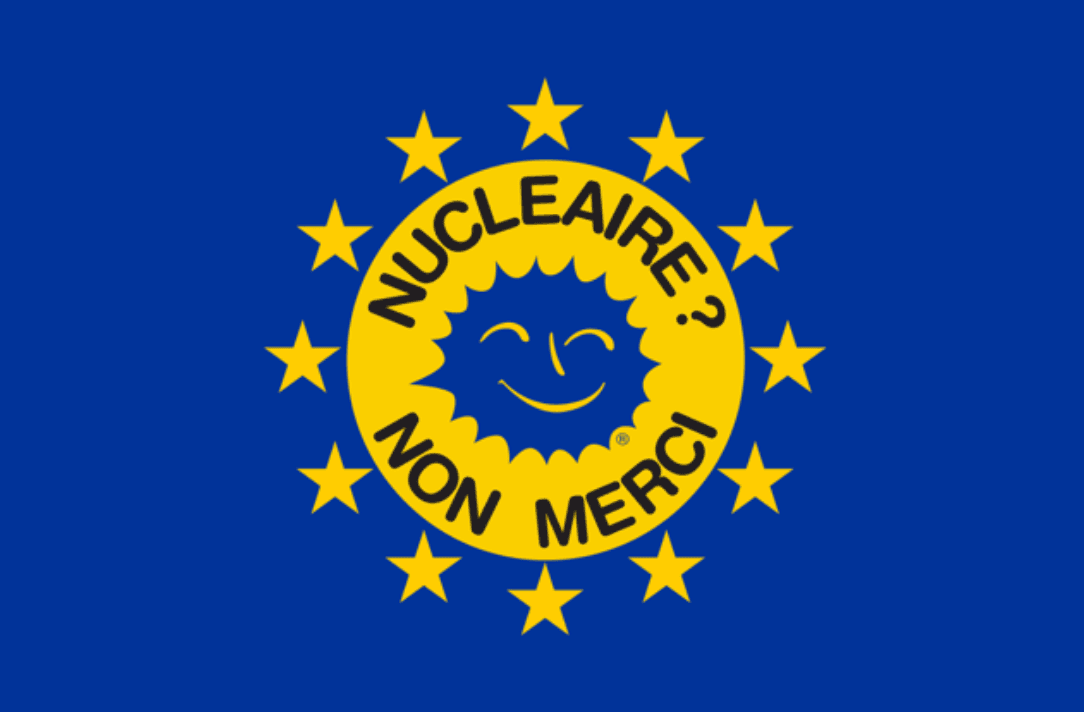The poisoned environmental Legacy of the Nuclear Park
There are radioactive hotspots everywhere.

The poisoned environmental legacy of the ‘Nuclear Park’
France prides itself on its “Nuclear Park”, its fleet of once 58 and now 56 operational nuclear reactors that deliver 70% of the country’s electricity.
However, the environmental effects of this considerable use of nuclear power – specifically from the need to mine uranium and the choice to reprocess irradiated nuclear fuel – have
France is heavily reliant on nuclear energy. Its 56 commercial reactors dot almost every corner of the country, providing 70% of all electricity consumed. France also possesses a nuclear weapons arsenal, fueled by the nuclear power program that predated it.
The possession of nuclear weapons affords France permanent membership status in the UN Security Council — a sense of prestige France is intent on maintaining.
French president, Emmanuel Macron, has now announced that the country will build new nuclear power plants,despite the fact that its current flagship Evolutionary Power Reactor (EPR), is beset by technical mistakes, years behind schedule and billions of Euros over budget at construction sites in France, Finland and the UK. The first of two operational EPRs in China had to be shut down late last year due to vibrations that caused radioactive leakage.
Consequently, it is unpopular to question the use of nuclear power in France and oppositional voices are rarely heard. The French anti-nuclear movement — largely networked under the Réseau Sortir du nucléaire — is snubbed by the press, and its members have been arrested and even convicted of alleged crimes.However, thanks to the pioneering work of activists, investigative journalists and independent scientists, some of the secrets buried beneath the ’Nuclear Park’, have started to be unearthed.
The damage from uranium mining
Nuclear power plants are fueled with uranium, a radioactive ore that is mined from the earth, typically in dry, desert areas far way, often by an Indigenous workforce offered little to no protection and none of the alleged benefits.However, between 1948 and 2001, France operated its own uranium mines — more than 250 of them in 27 departments across the country. Those French mine workers, like their Native American, Australian Aboriginal and African Touareg counterparts, and in ignorance of the true health risks.
The mines and the factories that milled and processed the uranium, now lie abandoned, leaving a that is hidden beneath flowering meadows, forest paths and ornamental lakes. But these radioactive residues and rocks — known as tailings — have also dispersed beyond the old mine boundaries, transported into rivers and streams, absorbed into wild plants, scattered on roadsides, and even paved into children’s playgrounds, homes and parking lots.
There are radioactive hotspots everywhere.
France may not yet have opened a high-level radioactive waste repository — still under dispute at Bure — but thanks to the contamination left behind by uranium mining, large swaths of the country are The widespread dispersal of radioactive contamination across France has been studied extensively by the independent French radiological laboratory, Commission de Recherche et d’Information Indépendantes sur la RADioactivité, known simply as CRIIRAD. Its scientists have traveled all over the world, measuring radiation levels at such notorious nuclear accident sites as Mayak and Chernobyl in the former Soviet Union, and at Fukushima in Japan. But often, they are just as shocked and outraged at the radiation levels they measure at home, and the <spanfailure of those responsible to take effective remediation steps to protect the public.
In the 2009 investigative French television program by Pieces de Conviction — entitled Uranium, the scandal of contaminated France
CRIIRAD’s scientific director, physicist Bruno Chareyron, is seen scraping the gravely surface off a parking lot at a cross-country ski club. Under the dusty gray stones we suddenly see a gleam of yellow. It is the telltale sign of uranium and Chareyron’s Geiger counter is recording radiation levels at more than The internationally accepted “safe” dose for the public is 1mSv a year. The public should not have access to this, he says, especially not children who are prone to pick up and pocket pebbles.
In all, there are an estimated 200-300 million tonnes of radioactive tailings dumped across France, exposing those who live, work or play nearby.
The contamination comes not only from the uranium, but from its often far more radioactive decay products. And while the state-owned nuclear company Orano (formerly Areva and, before that, Cogema) insists that these sites have been “returned to nature”, it is a purely cosmetic exercise that has granted impunity to the polluter but
In 2021, CRIIRAD’s Chareyron returned to the old Bellezane uranium mine, situated in Limousin, the most radioactively contaminated region in all of France. The lab had first taken readings there in 1998. While being filmed for a France 3 Nouvelle-Aquitaine news segment, and standing on a country path accessible to the public, Chareyron recorded radiation readings 10 times higher than what is considered normal for Limousin.
**CRIIRAD subsequently released an urgent appeal to elected officials to take action. **
The laboratory recorded similar findings at numerous other abandoned uranium mine sites.
Now, with all the French uranium mines closed, the fuel for the Parc Nucléaire must be imported. It comes mainly from Niger, one of the poorest countries in the world, and predominantly from the giant French-owned uranium mine near the town of Arlit. There, CRIIRAD found that mine workers and inhabitants are in the environment as a result of uranium mining activities.
A Greenpeace investigation concluded that French uranium mining activities in Niger had left behind a legacy of environmental contamination in that country, as it has in France, that would harm people for “centuries.”
The lethal legacy of uranium mining and processing that has contaminated so much of France is only the beginning of the story, however, just as uranium mining is only the beginning of the nuclear fuel chain.
Operating reactors and childhood leukemia
The electricity generation phase, on which the nuclear lobby bases its low-carbon argument to justify its continued use — while ignoring the front and back ends of the fuel chain, which have significant carbon footprints, (1) — is not without its damage to the environment either. Nuclear reactors release radiation into the environment as part of routine operation. At least 60 epidemiological studies have examined the possible health impacts of these releases, most of which found an living near operating nuclear power plants, compared to those living further away.
The most famous of these studies, conducted in Germany — Case-control study on childhood cancer in the vicinity of nuclear power plants in Germany 1980-2003 (2) — found a 60% increase in all cancers and a 120% increase in leukemias among children living within 5 km of all German nuclear power stations. This study was followed by others, largely supporting the data. But critics speculated that the amount of radioactivity in the releases was too low to have caused these epidemics.
For example, a 2008 study (3) by Laurier et al., of childhood leukemia around French reactors, concluded there was no “excess risk of leukaemia in young children living near French nuclear power plants”. However, the Laurier study was among those rebutted (4) and incorporated into a meta-analysis by Dr. Ian Fairlie and Dr. Alfred Körblein, which concluded that there were statistically significant increases in childhood leukemias near all the nuclear power plants studied and that “the matter is now beyond question, i.e., there’s a very clear association between increased child leukemias and proximity to nuclear power plants.”
The practice of averaging a month’s worth of releases into daily dose amounts ignores a sudden spike in radioactive releases, as happens when a reactor is refueling. Fairlie hypothesizes (5) that these spikes, delivering substantial radiation doses, could result in babies being born pre-leukemic due to exposure in utero, with the potential to progress to full leukemia additionally aggravated by subsequent post-natal exposure. (Nuclear power plants typically refuel every 18 months.)
Radioactive waste — the unsolved problem
At the end of nuclear power operations lies the huge and unsolved radioactive waste problem. Inevitably, the French reliance on nuclear power has generated an enormous amount of radioactive waste that must be managed and, ideally, isolated from the environment.
France is one of the few countries in the world to have chosen reprocessing as a way to try to manage irradiated reactor fuel.
Reprocessing involves a chemical separation of plutonium from the uranium products in reactor fuel rods once they have ceased being used in the reactor. This operation is conducted at the on the Cherbourg peninsula, which began operation in 1976.
Reprocessing releases larger volumes of radioactivity — typically by a factor of several thousand— than nuclear power plants. Liquid radioactive discharges from La Hague are released through pipes into the English Channel (La Manche), while radioactive gases are emitted from chimney stacks.
**The liquid discharges from La Hague have been measured at 17 million times more radioactive than normal sea water. **
La Hague “legally discharges 33 million liters of radioactive liquid into the sea each year,” Yannick Rousselet of Greenpeace France told Deutsche Welle in a 2020 article. This has contributed, among other issues, to elevated concentrations of carcinogenic carbon-14 in sea life (6).
Concentrations of krypton-85 released at La Hague have been recorded at 90,000 times higher than natural background.
La Hague is the largest single emitter of krypton-85 anywhere in the world. (7)
A November 1995 study — Incidence of leukemia in young people around La Hague nuclear waste reprocessing plant: a sensitivity analysis (8) — found elevated rates of leukemia. Yet its lead author, Jean-François Viel, was subsequently viciously attacked in attempts to discredit his findings and reputation, attacks that worsened after the publication of a second paper (9) in January 1997.
The cumulative negative health and environmental impacts of the French nuclear sector render the so-called benefits of the resulting low electricity rates a bitter delusion. For while France tries, wrongly, to attribute Germany’s higher electricity rates to that country’s rejection of nuclear power, typical German households use less electricity and actually pay lower monthly electric bills than French ones. Meanwhile, the French rely exclusively on electricity for heat in winter. Unable to meet this demand, France imports coal-fired electricity from Germany, perpetuating an industry that is fatal for the climate.
At the same time, renewable energy development in France has been stifled by the decades-long prioritization of nuclear power.
However, a culture of denial in the French nuclear sector is nothing new. In 1986, when the Chernobyl nuclear reactor exploded and melted down in the Ukraine, the French government assured its people that the Unlike in other European countries, the French continued to eat local produce and allowed their children to play outside. This lie of immunity, quickly exposed, was attributed to “fear of jeopardizing the country’s nuclear program and of hurting sales of its agricultural products.”
It was that deception in 1986 that led to the creation of the CRIIRAD laboratory in the first place, as its scientists began to map the hotspots in France where fallout from Chernobyl had deposited high levels of radioactivity.
The insistence on expanding rather than phasing out nuclear power has also cost France progress in its carbon reduction goals.
As Euractiv reported in August 2021, “France lagging behind in renewables can be explained in part by the fact that close to 70% of its electricity production is based on nuclear power.”
**Many French reactors have been operating since the 1970s and are now well past their expected lifespans. **
With aging comes degradation of key safety parts and In late December 2021 and in early January 2022, France saw a series of unanticipated reactor shutdowns due to safety issues, causing power shortages during a winter freeze and plunging French nuclear output to its lowest in 30 years. By early May, half of its entire reactor fleet was shut down due to technical problems or scheduled maintenance outages.
The health and wellbeing of the French population would be better served both by cleanup of — and reparation for — the existing radioactive contamination so widespread in the country, and by a serious shift away from the continued use of nuclear power and toward true climate solutions such as renewable energy and energy efficiency measures.
Linda Pentz GunterInternational specialist at Beyond Nuclear and editor and contributor at Beyond Nuclear International.
References:
Muellner et al., “Nuclear Energy — the solution to climate change?” Energy Policy, 2021.Spix, C. et al. “Case-control study on childhood cancer in the vicinity of nuclear power plants in Germany 1980-2003”, European Journal of Cancer, 2008.Laurier, D. et al., “Childhood leukaemia incidence below the age of 5 years near French nuclear power plants”, Journal of Radiological Protection, 2008.Fairlie, I. and Körblein, A., “Review of epidemiology studies of childhood leukaemia near nuclear facilities: commentary on Laurier et al.”, 2010.Fairlie, I., “Hypothesis to Explain Childhood Cancer near Nuclear Power Plants”, International Journal of Occupational and Environmental Health, 2013.Castrillejo, M., “Impact of nuclear fuel reprocessing on the temporal evolution of marine radiocarbon”, Science of the Total Environment, 2020.Turkevich, A. et al., “The radioactivity of atmospheric krypton in 1949-1950”, Proceedings of the National Academy of Sciences of the United States of America, 1997.Viel, J.F., et al., “Incidence of leukaemia in young people around the La Hague nuclear waste reprocessing plant: a sensitivity analysis”, Wiley Online Library, 1995Pobel, D., and Viel, J.F., “Case-control study of leukaemia among young people near La Hague nuclear reprocessing plant: the environmental hypothesis revisited”, National Library of Medicine, 1997.


